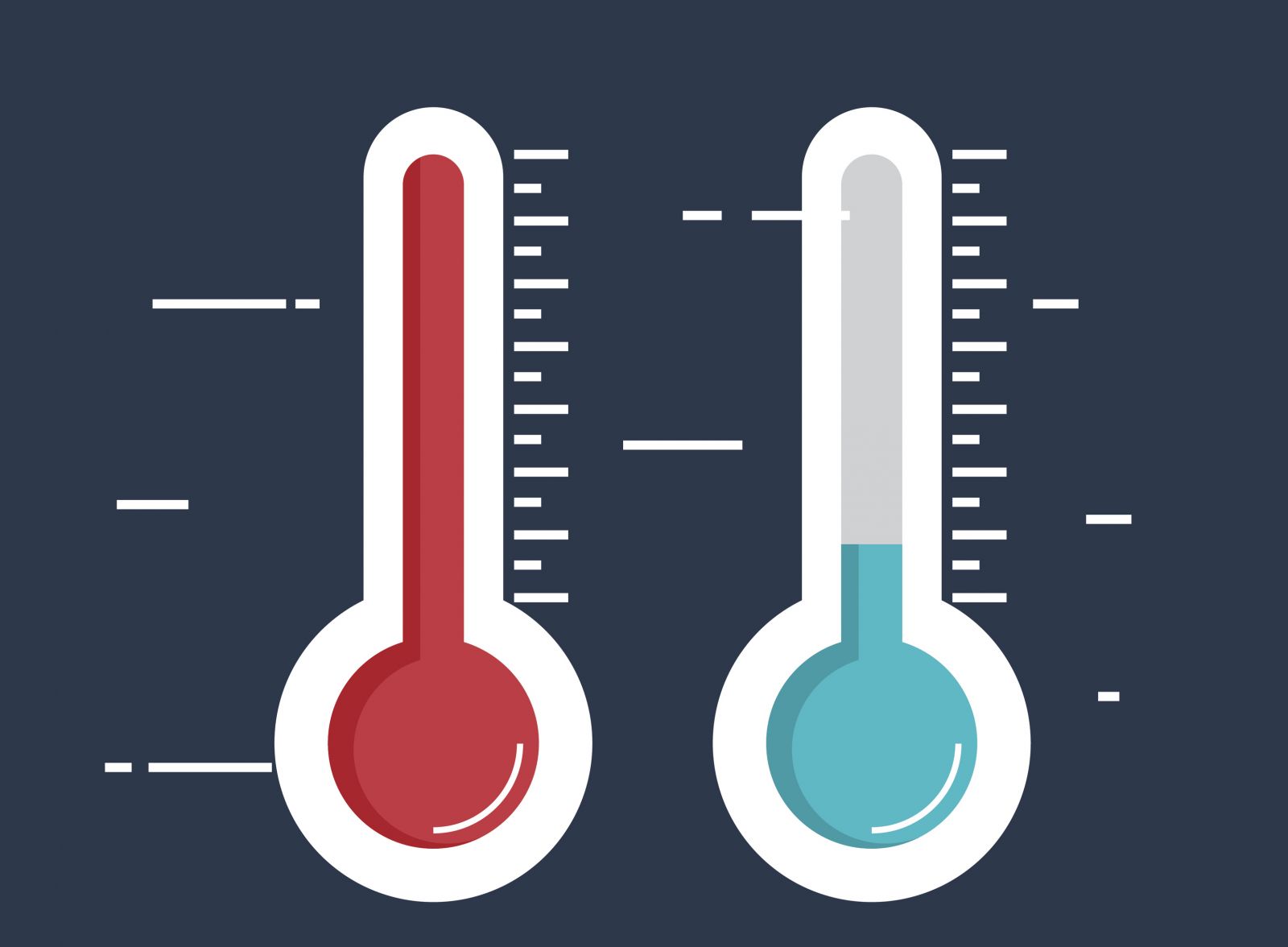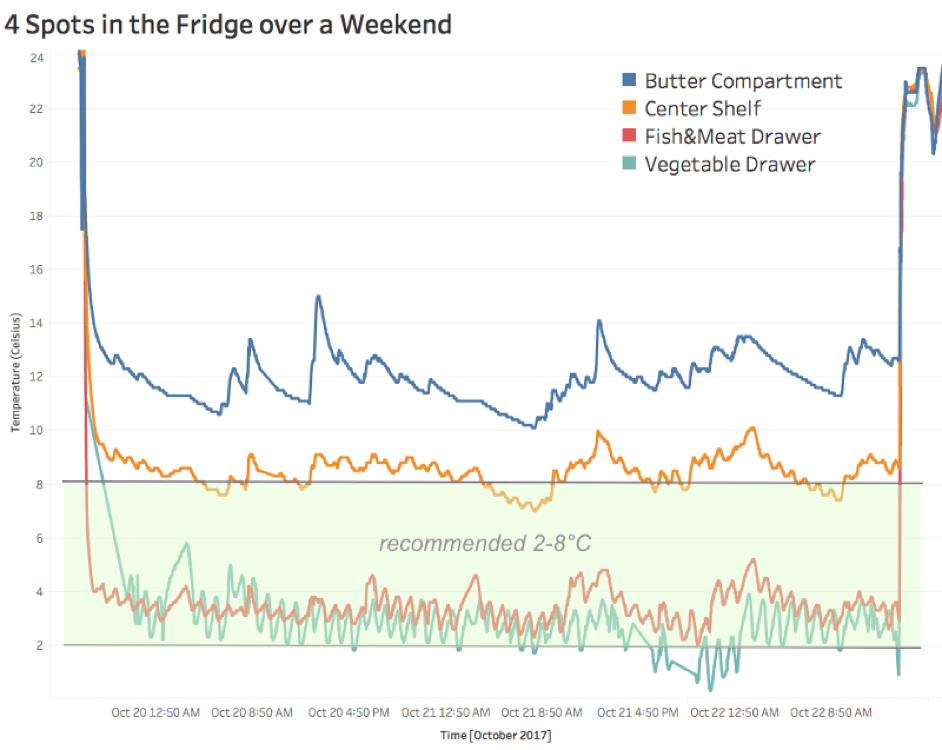Could Your Refrigerator Be One of the Factors that Affect Blood Glucose?
By Emily Fitts
 By Emily Fitts
By Emily Fitts
Surprising study findings from a look at refrigerator temperatures and the risk posed to insulin quality; plus, a guide to safe insulin storage and Med Angel’s very cool temp sensor
If you'd like to get articles like this delivered to your inbox, subscribe to our newsletter.
A study presented at EASD 2018 investigated how often insulin is stored outside of recommended temperature ranges and compared temperatures of insulin stored in refrigerators versus carried by people (in a “diabetes bag”). The main finding was that insulin stored in a fridge tends to be outside the recommended range more than insulin carried in a bag. (Keep in mind, however, that opened insulin carried in a bag has a wider acceptable temperature range than unopened insulin in a fridge.)
When insulin is stored outside of recommended temperatures, it can lose some of its glucose lowering effect, which means that people might unknowingly use insulin that is not working as expected. The recommended temperature range for storing insulin is actually very narrow: 36 - 46ºF (2 – 8ºC) in the refrigerator unopened, which will last until the expiration date. Once insulin is opened, it can be stored at “room temperature” – meaning 59 - 86ºF (15 - 30 ºC) – for up to 28 days. Keeping insulin at these ranges can help control for one of the most hidden factors that can affect blood glucose. To be clear, long-term storage of unopened insulin should be in a refrigerator. See tips for insulin storage below and an excellent one-page tip sheet here.
The study took temperature recordings from stored insulin – 230 refrigerated and 170 carried in an insulated pouch. A Med Angel temperature sensor, placed next to where insulin was being stored, automatically took a measurement every three minutes for an average of 49 days and sent the data to a smartphone app. The results:
-
On average, insulin stored in a refrigerator was out of the recommended temperature range 11% of the time, which equals over two and a half hours of each day.
-
In contrast, insulin carried in a bag was out of the recommended temperature range only 0.5% of the time – or eight minutes a day.
-
Overall, 79% of the insulin showed at least one temperature measurement outside the recommended range.
The study was done in collaboration with MedAngel, a startup that makes a smart sensor to measure insulin temperatures wherever they are stored. MedAngel is run by highly regarded entrepreneur Amin Zayani, who won first place at the Lyfebulb-Novo Nordisk Innovation Summit.
Tips for Insulin Storage
The results of this study raise concerns that everyone who uses insulin should be aware of. Home refrigerators may have temperature ranges outside those recommended for safe storage of insulin. What makes this more frustrating is the difficulty of detection – if I am not getting the expected response from my insulin, is it because my insulin is inactive (or less active) because of damage due to out of range temperatures or because of one of the other factors that affect blood glucose?
To keep insulin stored safely, remember these tips:
-
Refrigerators have areas that are warmer (the door) and cooler (lower shelves, walls, areas closest to the freezer). The best place to store insulin is the center shelf; while the graph below (from a Med Angel test) shows that the drawers may keep insulin at the recommended range, the higher risk of frozen insulin, which insulin manufacturers strongly caution against, makes them undesirable locations. The worst place seems to be butter compartment, which is a very common location!
-
If you have an extra full-sized, working fridge that you use less frequently, keep your insulin there instead. (Mini-fridges have notoriously unpredictable temperatures.)
-
To test your own refrigerator’s temperature zones as well as to have peace of mind that your insulin, wherever it’s being stored, is within the appropriate temperature range, MedAngel’s Bluetooth thermometer may be a good option. It’s also important to keep in mind that insulin doesn’t automatically lose all potency when outside recommended temperature ranges!
If your refrigerator freezes your insulin, try taking it back to your pharmacy; some pharmacies may exchange unopened products (unopened bottles – we know the package will be open!). However, the official recommendation from manufacturers is to discard the insulin and replace it as soon as possible. Certain emergency conditions may require using insulin that has been compromised; in those situations, know that the effectiveness may be reduced, so checking blood sugars more frequently can help reduce some of the risk.
If in need of immediate fresh insulin and cost is an issue, here are some suggestions:
-
If using Lilly insulin, call their helpline, which may be able to connect you to a free clinic or send a free supply of insulin: 833-808-1234
-
Call your healthcare provider to see if you can get insulin samples from them
-
Use a pharmacy co-pay coupon to help with out-of-pocket costs – you can typically get these online at the specific insulin’s webpage
-
Use over-the-counter regular/NPH insulin (available at Walgreens and CVS and Wal-Mart)








